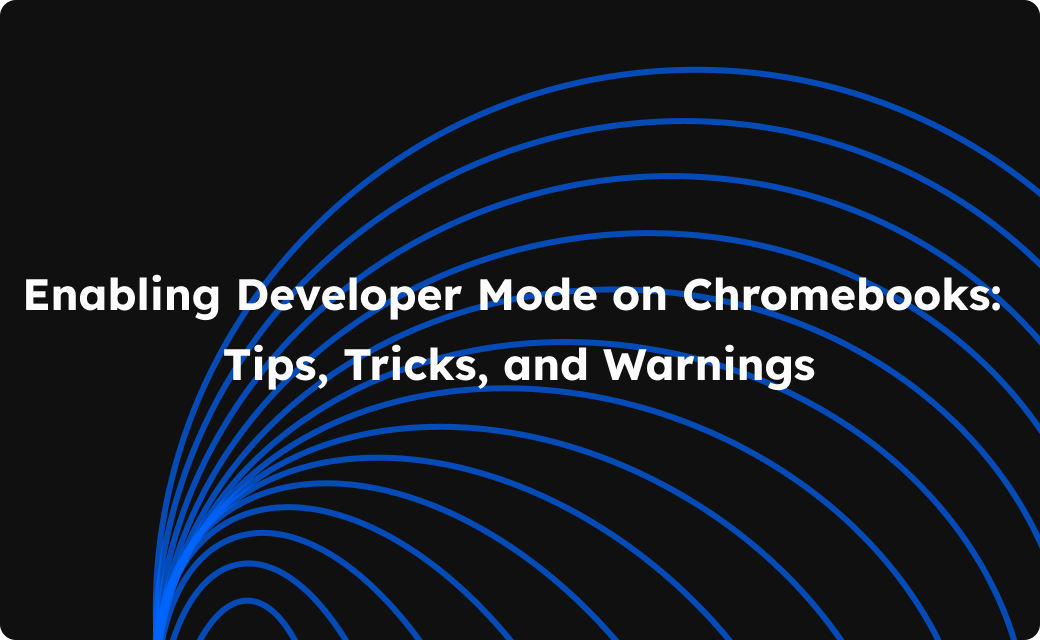In our last blog, we covered what makes up the cost of virtual desktops.
To fully understand where you are spending your money with VDIs, it becomes important to dig into how exactly most traditional VDIs work. Over time, it becomes a lot more obvious the steps that can be cut down to save both time, money and resources.
Larger companies often prefer Virtual Desktop Infrastructure (VDI) over Desktop as a Service (DaaS) due to their preference for keeping the infrastructure in-house with on-premises servers, allowing greater control over their data and devices. For instance, say your firm onboards a traditional VDI like Citrix,
Let's follow the journey of your virtual desktop session:
User Devices and Citrix Workspace App
You initiate the process by launching the Citrix Workspace app on your device, whether it's a laptop, tablet, or smartphone.
Citrix Gateway
If you're connecting from outside the corporate network, your request passes through the Citrix Gateway, a secure entry point that ensures encrypted and authenticated access to the VDI environment.
StoreFront
Once authenticated, StoreFront greets you with an enterprise application store, providing a user-friendly interface to access your virtual desktops and applications.
Delivery Controllers
These central managers orchestrate the entire VDI infrastructure, directing your request to the appropriate resources and managing the load across servers and hypervisors.
Microsoft SQL Server and Active Directory
The Delivery Controllers rely on the Microsoft SQL Server database to store configuration and session information, while the Active Directory handles user authentication and access control.
Server and Desktop VDAs
Based on your request, the Delivery Controllers spin up a virtual machine (VM) running either a server or desktop operating system, hosted on a hypervisor or cloud service.
Licence Server
Before granting access, the License Server validates your Citrix product licence, ensuring compliance and preventing unauthorised usage.
Director
Behind the scenes, the Director tool monitors the VDI environment, enabling IT teams to troubleshoot issues proactively and provide seamless support.
Studio This powerful management console allows IT administrators to configure and maintain the VDI environment, ensuring optimal performance and security.
Eventually, your virtual desktop or application is up and running, providing you with a long-familiar experience, regardless of your physical location or device.
An especially tedious problem that we keep seeing in this space are the costs associated with maintainance, scaling or even sizing down the servers when required, and the latency that arises due to all the data transfer that happens for every requirement between all these servers.
Now considering the cost centres with VDI are often OpEx heavy and can exponentially shoot up while scaling, the biggest cost factors are;
- On-premises servers - configurations, maintenance, deployment, energy, and repair costs.
- Hypervisor, VDA and VDI software licences.
- Software licences for the applications used.
- IT overheads related to the technical expertise involved, either with MSPs or in-house teams handling the infrastructure.
Let’s take a minute to relook at a more modern architecture of your VDI.

With Neverinstall’s VDI, the delivery controller, DNS and netscaler servers are baked into the product, and the need for having a load balancer also vanishes by virtue of using cloudflare proxy in its place, reducing the total cost of ownership (TCO) by more than 50%. This brings down the latency to a barely visible difference between your virtual and local machines. As a consequence of the elimination of a few processes in the middle, the infrastructure and the connected devices automatically enter Zero-Trust state, ensuring further security for businesses.
When deploying Neverinstall, the NI-agent is directly called into the virtual machines and manages it from within. This eliminates the need for a specialised agent server to handle the back and forth, cuts down on latency by reducing intermediary steps, and also fortifies your virtual workspaces.
Coincidentally, this is the same simplicity that practically diminishes the time taken with design and implementation of your virtual infrastructures, making deployment and more importantly scaling up and down instantaneous and extremely cost-effective.
With traditional VDI’s your firm would have to wait approximately 45 days before the workspaces are ready, and even more when you decide to increase your resources and capabilities. Neverinstall VDIs enables you to hit the ground running instantly, no matter how much you want to scale your resources.
Moreover, the labour involved with managing these controls, scaling resources across distributed teams, and containing access has been simplified, and brought down to a few clicks each.
This comes with a wide range of advantages,
Virtual Machine Isolation, by default
- With Neverinstall's approach, the NI-agent is directly embedded within each virtual machine, managing it from the inside. This tight integration and isolated execution of the NI-agent within individual virtual machines enable a high degree of isolation between different workloads or virtual desktop sessions.
- If an issue or failure occurs within one virtual machine or user session, the isolated nature of the NI-agent's execution prevents it from affecting or cascading to other virtual machines or user sessions running on the same infrastructure.
- By leveraging this isolation capability inherent in the direct integration of NI-agents, Neverinstall's VDI architecture enhances overall system resilience and fault tolerance by simply subtracting instead of adding.
Reduced Infrastructure Requirements
- With way less servers to maintain and power up, your capable IT teams can also take their hands off the more routine and time-consuming tasks.
- That translates into lower hardware acquisition, maintenance costs, and IT overheads.
Lower Operational Costs
- With the complexity in managing your VDI environments finally under control, this simplification can lead to lower operational costs associated with technical expertise, support, and administration.
Improved Resource Utilisation
- The isolated execution of NI-agents within individual virtual machines allows for more efficient utilisation of system resources. If one virtual machine experiences issues, it does not affect the resource allocation or performance of other virtual machines, resulting in better overall resource utilisation and potential cost savings.
Enhanced security and compliance
- The Zero-Trust state achieved by Neverinstall's architecture can potentially reduce the costs associated with security breaches, data losses, and compliance violations, which can be significantly higher than the investment in a secure VDI solution.
Reduced TCO
- Total cost of ownership (TCO) with Neverinstall’s VDI comes down by a large degree, with the licensing cost reducing by over half. When the above mentioned factors come into play with regards to the biggest concurrent cost centres such as server maintenance, support, disaster recovery, IT expertise, IT overheads with enabling flexibility, and superior security, a more optimal solution exists without compromising on user and admin experience.
With Neverinstall, organisations are empowered to conquer superior ROI while lowering their TCO. Our approach annihilates the complexities that have long plagued VDI scaling and flexibility, enabling you to command your operational expenses with the precision of a sniper. Cost predictability and control are more in your hands than ever before.






Join the conversation.